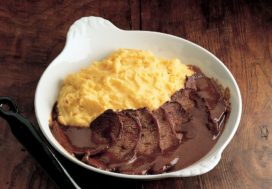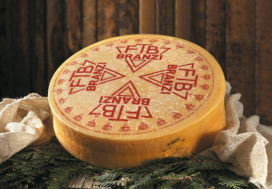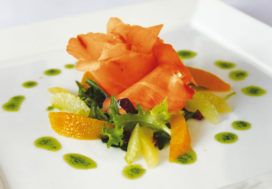Risotto alla luganega
The risotto alla luganega, as it is to be called the sausage in varesotto, is the typical dish of the last Thursday of the month of January, in which is celebrated the Giöbia.
A dish that might appear to the most as a simple and easy thing, but that may give already rise to real disputes, even only for the way to write its name: Giubiana, Giouebia, Gioebia or Giobia? Each place, pratically, has built its personal and own way of celebration.
For example, in Varese the boy gives to his loved one a heart made of pastry, in Cantu is to be burnt a chatelaine traitor, in Canzo there is even a trial for witchcraft, while in Busto Arsizio you shall burn all that is bad and that had been brought from the year that just ended.
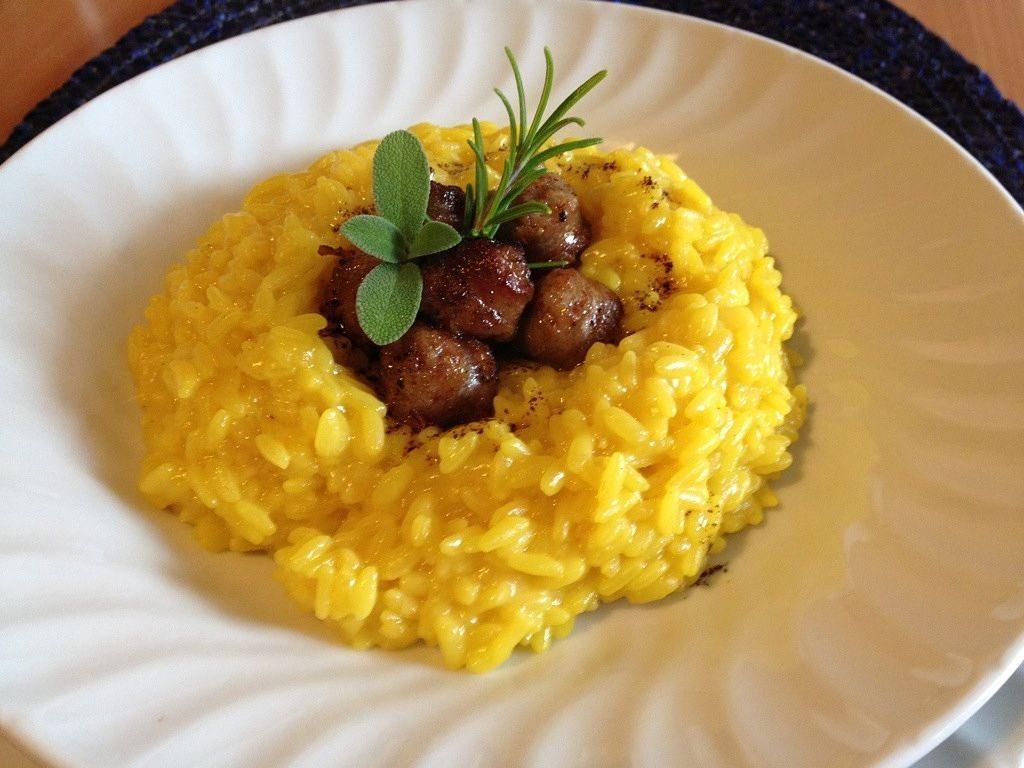
Risotto alla luganega foto medesterraneo
But the more widespread and oldest tradition is the dinner among women, when in fact the ancestors gathered in what was the last Thursday of January to eat all together the risotto with sausage. It is therefore a highly symbolic traditional dish
In fact rice was seen as an allegory for good luck, significance which is still found today, for example, with its traditional throwing at weddings, while the pork represented the symbol of abundance. A sort of ante litteram (before its time) Women’s Day, a way by which men expressed gratitude to the women for all their hard work.
Not for nothing, this festival dates back to the times when women were denied the possibility to sit at the table with men, and therefore ate either by the stove or standing. During the festival women, pratically, silently protested the desire to see recognized their equality. But this festival was also an opportunity to go and tighten social relationships between women, just because of the fact that in those days men were often away from home for long periods for work.
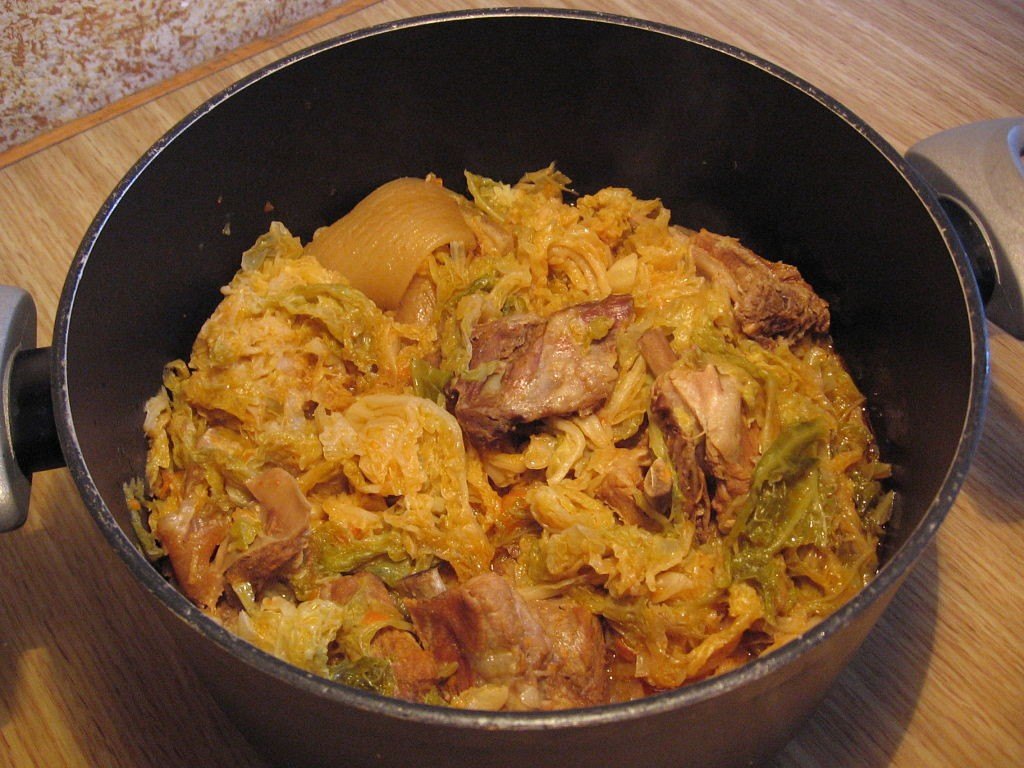
Cassoeula
Cassoela
Typical dish of the Milanese cuisine the casoeûla is mainly composed of cabbage and a variety of parts and cuts of pork.
There is speculation that its name may derive from the word cazza, which means cup or casseruola, to symbolize the container where it was cooked.
The casoeûla is a very old specialty. It is said that in the chief town of Lombardia its spreading dates from the period of the Spanish rule. According to a famous popular legend in Milan the casoeûla was brought by a Spanish soldier who, having fallen head over heels in love for a girl from Milan working as a cook in a noble family, taught her how to prepare this dish that the young woman then served, getting a resounding success.
The casoeûla, basically, is a simple dish, because it is prepared with scraps of pork together with cabbage, a kind of vegetable that is very easy to find in the countryside of Lombardia.
For the preparation of the casoeûla the more appropriate periods of the year, according to tradition, are right in the end of autumn and winter, the typical moments in which the cabbage fields receive the first cold.
La Rosticiada
Second dish based on meat pork, the Rosticiada of classic Lombardy origins, is typical of the whole territory and it is, usually, accompanied with the classic polenta but also with the puree.
This typical Lombard recipe is contested between the varesotto, the area of Brianza in the province of Lecco, and the provinces of Como.
By the dialect term rustisciada it is, therefore, intended a kind of stew made of sausages and pork, for the preparation of which in some parts the sausage is left to pieces while in others it is totally crumbled. Usually prepared during the colder months, it is a dish anyway linked to the noblest tradition, for which nothing must be left of the pig.
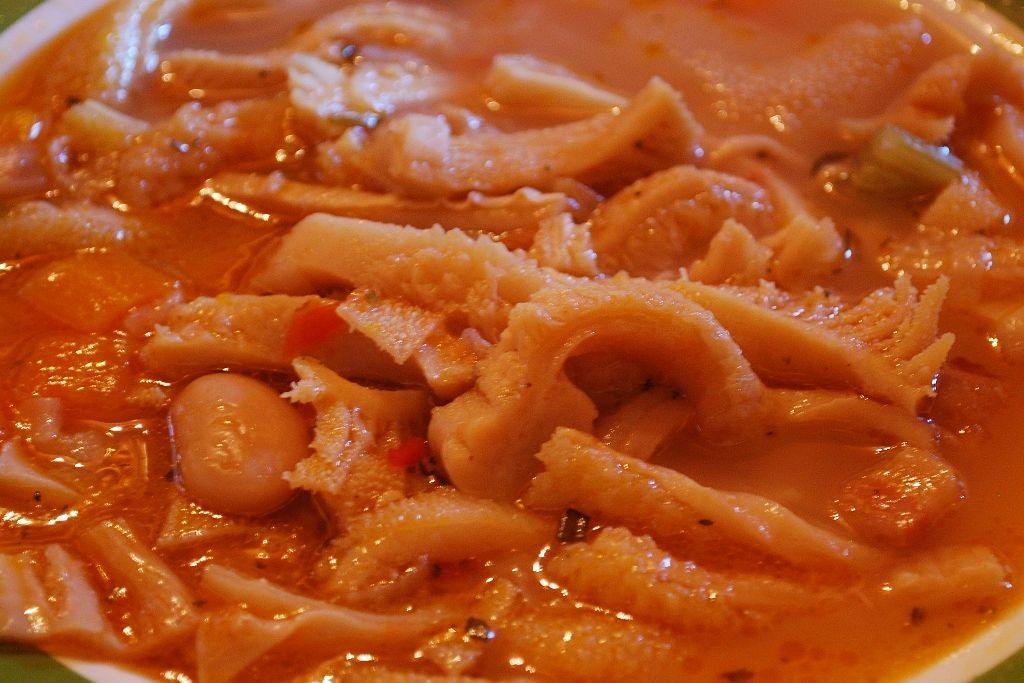
Busecca foto gustodellanatura
Busecca
In the gastronomic tradition of Lombardia, and especially in that of Milan, often you can sample dishes linked to historical preparations of peasant origins. For example one of the most known preparations regards the tripe alla Milanese, which is also called busecca.
In the past, the Milanese had to be particularly greedy of it, considering the fact that they were called ironically busecconi. The busecca was a dish that followed the lives of farmers in the most important occasions. Mainly it was consumed during the night of Christmas Eve, when, after the midnight mass, the peasants gathered in the stables, but was also prepared on the occasion of livestock markets and fairs.
Regarding the preparation of busecca, or the Milanese tripe, there are many variations basically due to the fact that each family as well as each place and city, had a recipe attached to their traditions.



